HTML
--> --> -->The samples were irradiated at the K-400 Neutron Generator at China Academy of Engineering Physics (CAEP) for 6.2-7.5 h. Neutrons around 14 MeV with an yield of about (4-5)×1010
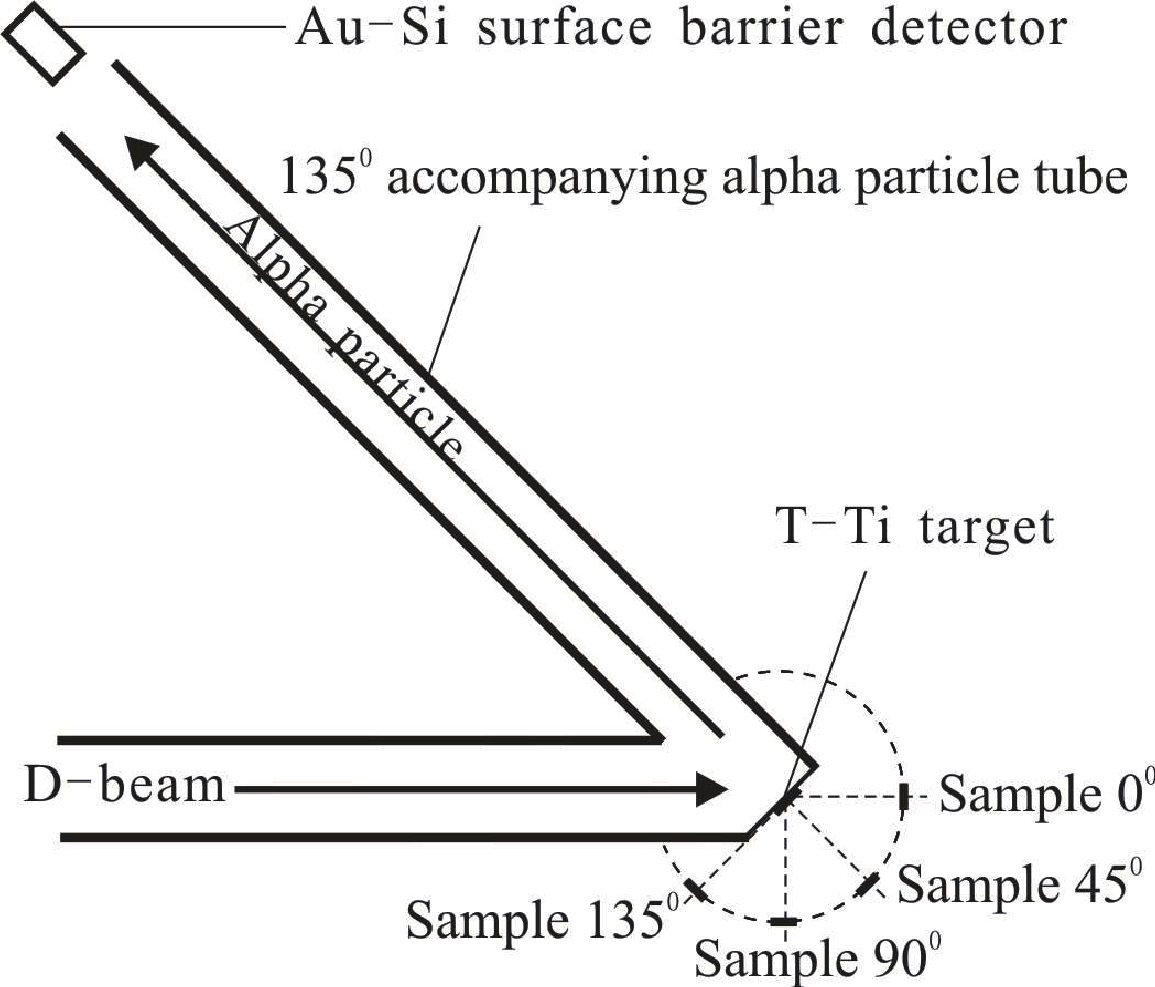 Figure1. Schematic diagram of neutron flux variation monitoring and sample placement.
Figure1. Schematic diagram of neutron flux variation monitoring and sample placement.The γ-ray activities of 93m+gY, 97Zr, 95Zr, 87mSr, 91Sr, 90mY, 92Y, 94Y, and 92mNb were determined by a well-calibrated GEM-60P coaxial high-purity germanium ORTEC detector made in the USA (crystal diameter: 70.1 mm, crystal length: 72.3 mm) with a relative efficiency of 68% and an energy resolution of 1.69 keV at 1.332 MeV. The efficiency of the detector was calibrated in advance using a series of standard γ sources.
Decay characteristics of the product nuclides and the natural abundance of target isotopes under investigation are summarized in Table 1 [9]. The natural abundance of 93Nb is adopted from Ref. [10].
| reaction | abundance of target isotope (%) | product nuclides | T1/2 | Eγ/keV | Iγ (%) |
| 94Zr(n,d*) | 17.38 | 93m+gY | 10.18 h | 266.9 | 7.4 |
| 96Zr(n,γ) | 2.8 | 97Zr | 16.749 h | 743.36 | 93.09 |
| 96Zr(n,2n) | 2.8 | 95Zr | 64.032 d | 756.725 | 54.38 |
| 90Zr(n,α) | 51.45 | 87mSr | 2.815 h | 388.531 | 82.19 |
| 94Zr(n,α) | 17.38 | 91Sr | 9.65 h | 1024.3 | 33.5 |
| 90Zr(n,p) | 51.45 | 90mY | 3.19 h | 479.51 | 90.74 |
| 92Zr(n,p) | 17.15 | 92Y | 3.54 h | 934.47 | 13.9 |
| 94Zr(n,p) | 17.38 | 94Y | 18.7 m | 918.74 | 56 |
| 93Nb(n,2n) | 100 | 92mNb | 10.15 d | 934.44 | 99.15 |
Table1.Reactions and associated decay data of product nuclides.
The experimental cross sections of the 94Zr(n,d*)93m+gY, 96Zr(n,γ)97Zr, 96Zr(n,2n)95Zr, 90Zr(n,α)87mSr, 94Zr(n,α)91Sr, 90Zr(n,p)90mY, 92Zr(n,p)92Y, and 94Zr(n,p)94Y reactions were acquired. The monitor reaction was the 93Nb(n,2n)92mNb reaction, whose cross sections are 457.9 ± 6.8, 459.8 ± 6.8, 459.8 ± 6.8, and 459.7 ± 5.0 mb at the neutron energies of 13.5, 14.1, 14.4, and 14.8 MeV, respectively [12]. The measured cross sections are listed in Table 2 and charted in Figs. 2-9. The cross sections of the 94Zr(n,d*)93m+gY, 96Zr(n,γ)97Zr, 96Zr(n,2n)95Zr, 90Zr(n,α)87mSr, 94Zr(n,α)91Sr, 90Zr(n,p)90mY, 92Zr(n,p)92Y, and 94Zr(n,p)94Y reactions around 14 MeV neutrons have been measured by 2, 4, 12, 22, 20, 24, 21, 23 groups, respectively [1]. Previously obtained experimental cross sections around 14 MeV neutrons for the 94Zr(n,d*)93m+gY and 96Zr(n,γ)97Zr reactions [2-6] are also charted in Figs. 2-3 for comparison. For the remainder, previous measurements [13-24], whose results were published after 1990, are charted in Figs. 4-9 for comparison.
| reaction | the measured cross sections (in mb) at various neutron energies (in MeV) literature values En/MeV, σ/mb | |||
| En=13.5±0.3 | En=14.1±0.2 | En=14.4±0.3 | En=14.8±0.2 | |
| 94Zr(n,d*)93m+gY | 1.15±0.06 | 1.19±0.06 | 1.93±0.09 | 2.17±0.10 |
| 96Zr(n,γ)97Zr | 2.33±0.10 | 2.24±0.09 | 1.85±0.09 | 1.84±0.08 |
| 96Zr(n,2n)95Zr | 1502±63 | 1520±66 | 1521±68 | 1577±70 |
| 90Zr(n,α)87mSr | 2.9±0.2 | 3.1±0.2 | 3.6±0.2 | 3.6±0.2 |
| 94Zr(n,α)91Sr | 3.86±0.16 | 4.10±0.18 | 4.77±0.20 | 5.09±0.22 |
| 90Zr(n,p)90mY | 9.8±0.4 | 10.1±0.5 | 11.4±0.5 | 11.1±0.5 |
| 92Zr(n,p)92Y | 17.2±0.7 | 17.8±0.8 | 21.4±0.9 | 20.2±0.9 |
| 94Zr(n,p)94Y | 5.2±0.3 | 6.5±0.3 | 7.3±0.4 | |
Table2.Summary of cross section measurements.
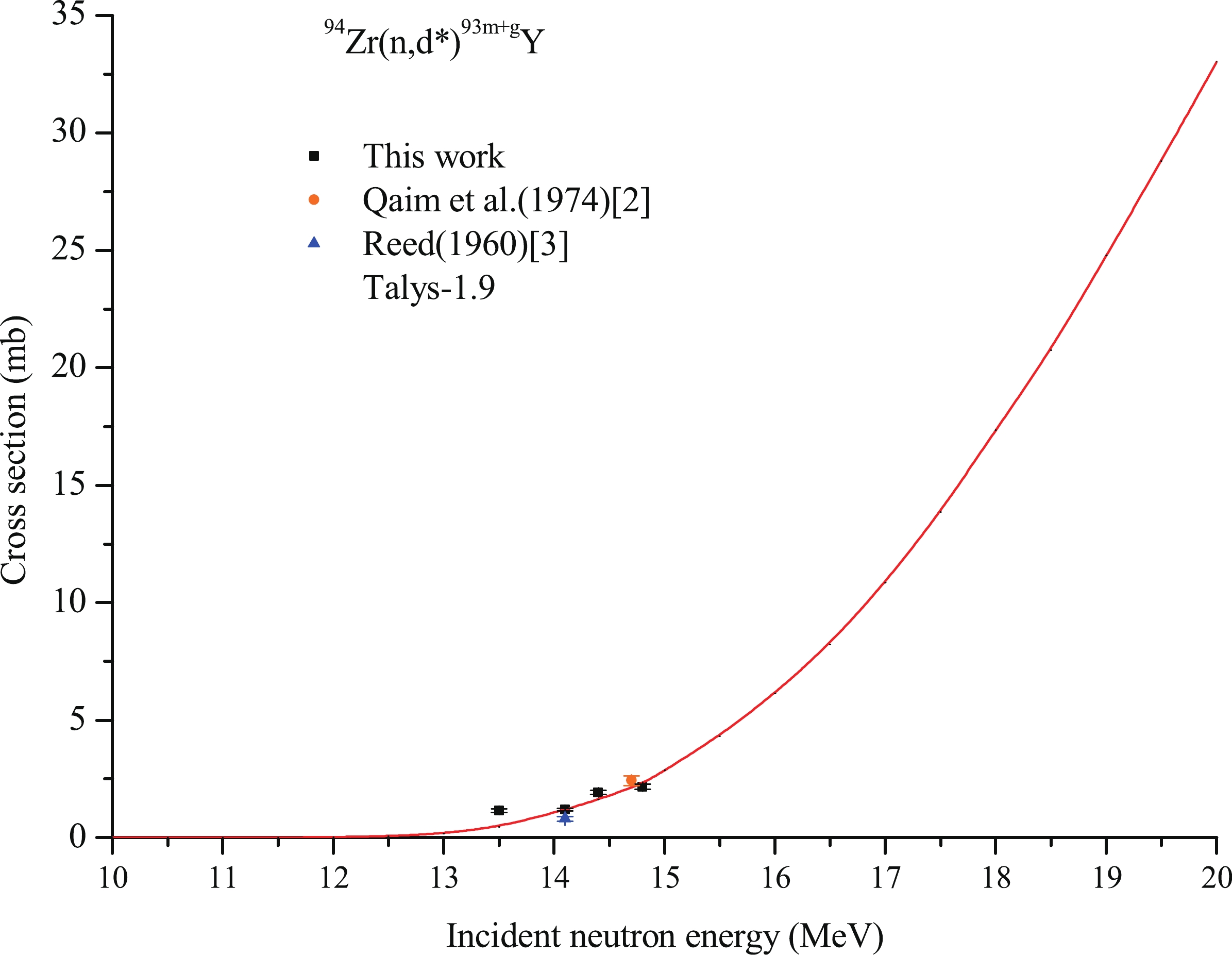 Figure2. (color online) Cross section of 94Zr(n,d*)93m+gY reaction.
Figure2. (color online) Cross section of 94Zr(n,d*)93m+gY reaction. Figure3. (color online) Cross section of 96Zr(n,γ)97Zr reaction.
Figure3. (color online) Cross section of 96Zr(n,γ)97Zr reaction.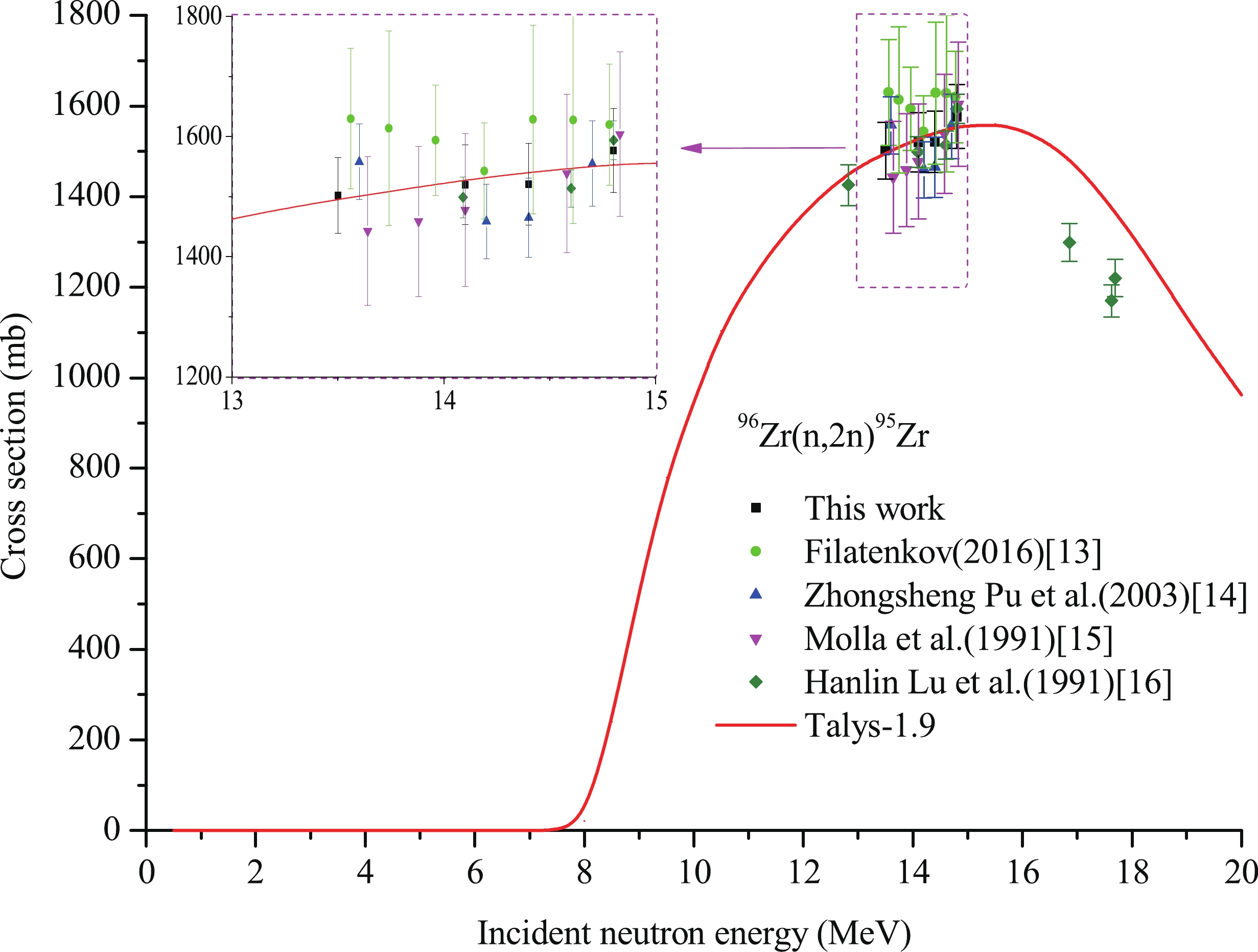 Figure4. (color online) Cross section of 96Zr(n,2n)95Zr reaction.
Figure4. (color online) Cross section of 96Zr(n,2n)95Zr reaction. Figure5. (color online) Cross section of 90Zr(n,α)87mS reaction.
Figure5. (color online) Cross section of 90Zr(n,α)87mS reaction. Figure6. (color online) Cross section of 94Zr(n,α)91Sr reaction.
Figure6. (color online) Cross section of 94Zr(n,α)91Sr reaction. Figure7. (color online) Cross section of 90Zr(n,p)90mY reaction.
Figure7. (color online) Cross section of 90Zr(n,p)90mY reaction.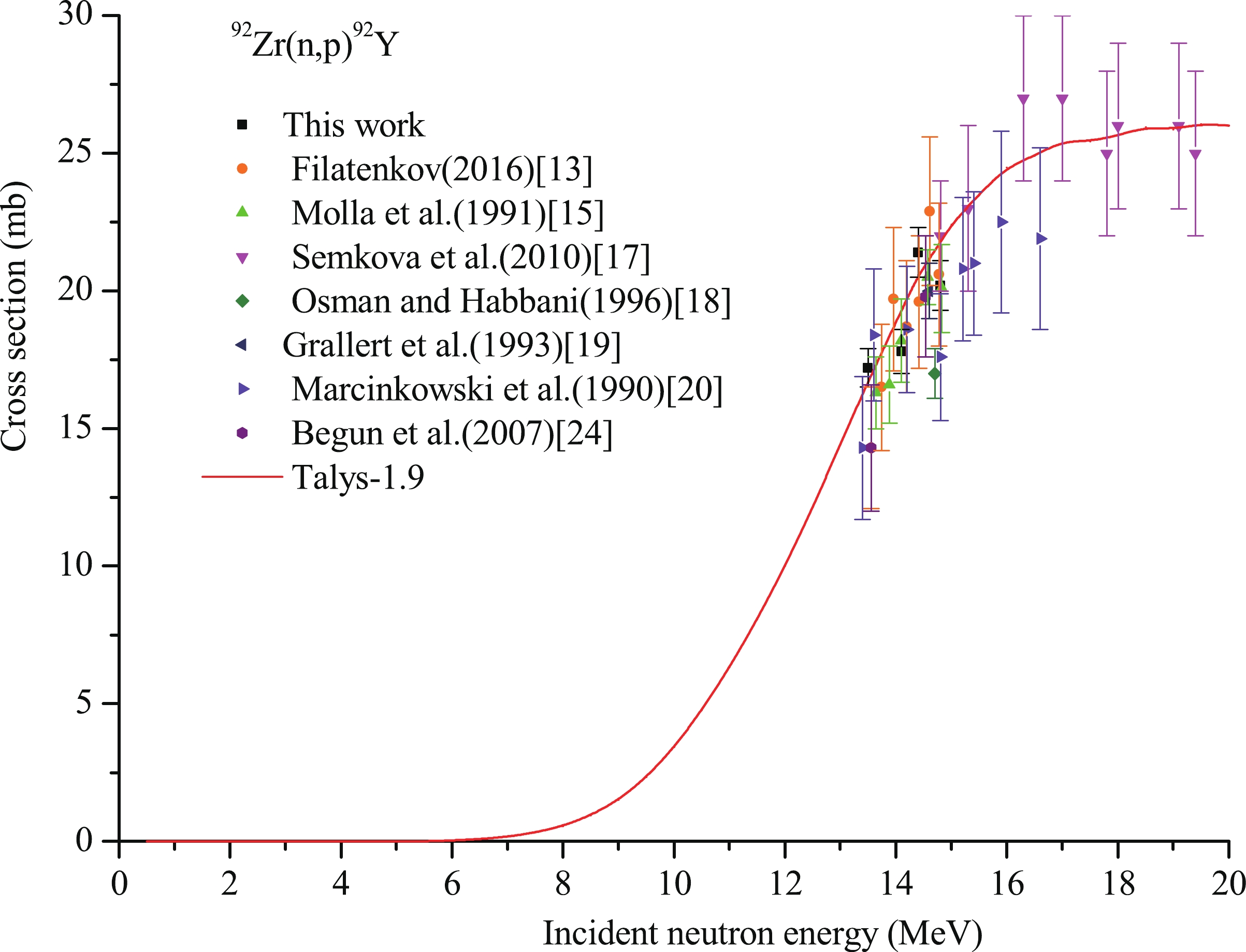 Figure8. (color online) Cross section of 92Zr(n,p)92Y reaction.
Figure8. (color online) Cross section of 92Zr(n,p)92Y reaction.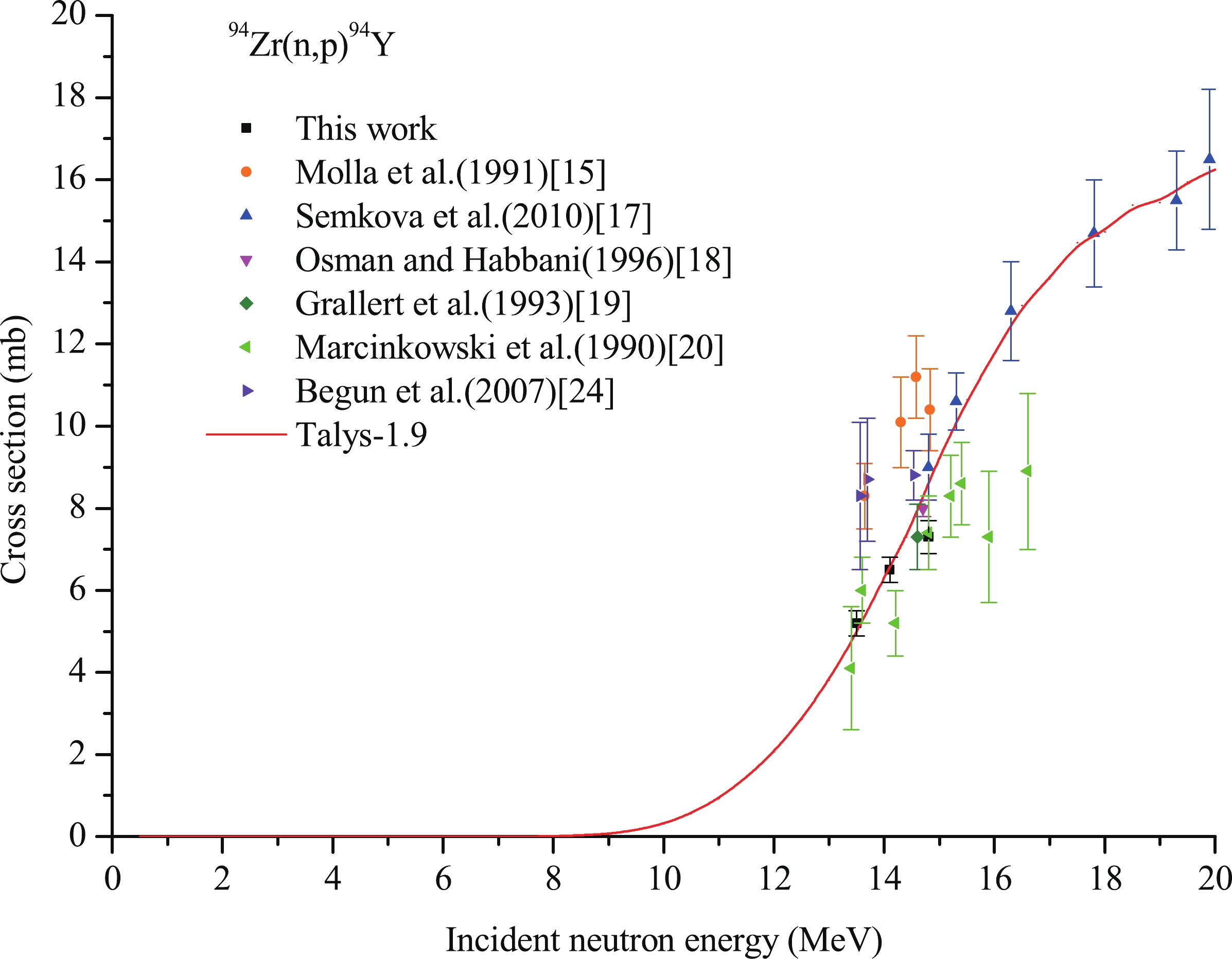 Figure9. (color online) Cross section of 94Zr(n,p)94Y reaction.
Figure9. (color online) Cross section of 94Zr(n,p)94Y reaction.Theoretical calculations of excitation functions of the 94Zr(n,d*)93m+gY, 96Zr(n,γ)97Zr, 96Zr(n,2n)95Zr, 90Zr(n,α)87mSr, 94Zr(n,α)91Sr, 90Zr(n,p)90mY, 92Zr(n,p)92Y, and 94Zr(n,p)94Y reactions were performed using the nuclear theoretical model program system Talys-1.9, fully described in the Talys-1.9 manual [7]. Their excitation curves were obtained within the incident neutron energy range from the threshold to 20 MeV, as shown in Figs. 2-9 for comparison. Different parameters in the theoretical model program system Talys-1.9 were set according to our experimental cross sections and the results in previously published works [2-6, 13-24] for different nuclear reactions. For example, the optical model potential (OMP) parameter rV was set for the 96Zr(n,γ)97Zr, 96Zr(n,2n)95Zr, and 90Zr(n,α)87mSr reactions, the OMP parameter rV and aV were set for the 94Zr(n,d*)93m+gY, 94Zr(n,α)91Sr, and 92Zr(n,p)92Y reactions, the OMP parameter rV, aV and the level density parameter at the neutron separation energy were set for the 94Zr(n,p)94Y reaction, the OMP parameter rV, aV, model for level densities and the overall constant for the matrix element or the optical model strength in the exciton model were set for the 90Zr(n,p)90mY reaction.
Talys-1.9 (latest version of the TALYS code) is a computer code used for the analysis and prediction of nuclear reactions based on physics models and parameterizations [7]. It is a versatile tool for the analyses of basic microscopic scientific experiments or generation of nuclear data for applications. It can simulate nuclear reactions involving neutrons, photons, protons, deuterons, tritons, 3He, and alpha-particles in the 1 keV-200 MeV energy range and for target nuclides of mass number range (12 < A < 339) [7]. Therefore, the TALYS code has been widely used in relevant research by most scientists [25-28].
Two or more reactions may produce the same product nucleus due to the use of natural zirconium foils in this work. These include the 96Zr(n,2n)95Zr and 94Zr(n,γ)95Zr reactions, the 90Zr(n,α)87mSr and 91Zr(n, n'α)87mSr reactions, the 90Zr(n,p)90mY,91Zr(n,d*)90mY and 92Zr(n,t)90mY reactions, the 92Zr(n,p)92Y and 94Zr(n,t)92Y reactions, and the 94Zr(n,p)94Y and 96Zr(n,t)94Y reactions. Thus, the cross sections obtained for the 96Zr(n,2n)95Zr reaction include the contribution from the 94Zr(n,γ)95Zr reaction, which can be neglected, as it has a very small cross section (μb) around the neutron energy of 14 MeV. The cross sections obtained for the 90Zr(n,α)87mSr reaction include the contribution of the 91Zr(n, n'α)87mSr reaction, which can be neglected as it has a very small cross section (μb). The cross sections obtained for the 90Zr(n,p)90mY reaction include the contribution of the 91Zr(n,d*)90mY and 92Zr(n,t)90mY reactions, and the contribution of the 92Zr(n,t)90mY reaction can be neglected because its cross section is small (μb). The cross section values obtained for the 92Zr(n,p)92Y reaction include the contribution of the 94Zr(n,t)92Y reaction, which can be neglected because it has a very small cross section (μb). The cross sections obtained for the 94Zr(n,p)94Y reaction include the contribution of the 96Zr(n,t)94Y reaction, which can be neglected, as it has a very small cross section (μb).
For the 94Zr(n,d*)93m+gY reaction, as shown in Table 2 and Fig. 2, the trend of the theoretical excitation curve obtained by the computer code system Talys-1.9 increases with increasing incident neutron energy around 14 MeV. In the neutron energy range of 13.5-14.8 MeV, the fitted line of our experimental values is in good agreement with the theoretical excitation curve obtained by Talys-1.9. These two existing experimental datasets [2, 3] are well distributed on both sides of the theoretical curve, although there is a significant difference between them, which is reliable. The theoretical excitation curve generally matches these experimental data (including our results) reasonably well.
For the 96Zr(n,γ)97Zr reaction, Table 2 and Fig. 3 show that the fitting line of our results in the neutron energy range of 13.5-14.8 MeV is consistent with the theoretical excitation curve obtained by Talys-1.9 within the experimental error. The result of Pepelnik et al. [4] is considerably lower than that of the fitting line of our experimental values and that of the theoretical excitation curve obtained by Talys-1.9 at the corresponding energy, which is dubious. The result of Perkin et al. [6] is significantly higher than that of the fitting line of our experimental values and that of theoretical excitation curve obtained by Talys-1.9 at the corresponding energy, which is likewise dubious. The result of Wagner and Warhanek [5] is close to that of the fitting line of our experimental values and that of theoretical excitation curve obtained by Talys-1.9 at the corresponding energy.
For the 96Zr(n,2n)95Zr reaction, shown in Table 2 and Fig. 4, our experimental cross sections around the neutron energy of 14 MeV are in agreement, within the experimental error, with those of the fitting lines of Filatenkov [13], Molla et al. [15], and Hanlin Lu et al. [16] at the same energies as well as the theoretical values of the excitation curve obtained by Talys-1.9 at the corresponding energies. The three experimental datasets of Hanlin Lu et al. [16] at neutron energies of 16.86, 17.63, and 17.69 MeV are significantly lower than the theoretical excitation curves obtained by Talys-1.9 at the corresponding energies, which is dubious. The fitted line of our cross sections around the neutron energy of 14 MeV is consistent with the theoretical excitation curve obtained by Talys-1.9 within experimental error.
The cross sections of the 90Zr(n,α)87mSr reaction are shown in Table 2 and Fig. 5. They show that the fitted line of our experimental cross sections is in agreement, within the experimental error, with the fitted line of the cross sections of Marcinkowski et al. [20], except for the two values at the neutron energies of 15.9 and 16.6 MeV as well as the theoretical excitation curve obtained by Talys-1.9. In contrast, the results of Filatenkov [13] and Semkova et al. [17] are overall higher. The results of Molla et al. [15] at neutron energies of 13.64 and 13.88 MeV are low, and at the neutron energies of 14.1, 14.58, 14.83 MeV, they are high.
For the 94Zr(n,α)91Sr reaction, shown in Table 2 and Fig. 6, the fitted line of our experimental cross sections in the neutron energy range of 13.5-14.8 MeV is in agreement, within the experimental error, with the fitted line of the cross sections of Filatenkov [13] except for the three values at the neutron energies of 13.56, 13.74, and 13.96 MeV and the fitted line of Marcinkowski et al. [20], as well as the theoretical excitation curve obtained by Talys-1.9. In contrast, the results of Molla et al. [15] and the values of Filatenkov [13] at the neutron energies of 13.56, 13.74, 13.96 MeV are higher.
For the 90Zr(n,p)90mY reaction, shown in Table 2 and Fig. 7, the results of Filatenkov [13], Molla et al. [15], Grallert et al. [19], Thiep et al. [22] are higher. In particular, the result of Sarkar and Bhoraskar [23] is significantly higher than all the other results, which is dubious. In contrast, the result of Osman and Habbani [18] is significantly lower than all the other results, which is also dubious. Our experimental cross sections are in agreement, within the experimental error, with those of the fitted line of the cross sections of Marcinkowski et al. [20] at the corresponding energies, as well as the theoretical values of the excitation curve obtained by Talys-1.9 at the corresponding energies.
For the 92Zr(n,p)92Y reaction, shown in Table 2 and Fig. 8, the fitted line of our experimental cross sections in the neutron energy range of 13.5-14.8 MeV is in agreement, within the experimental error, with the fitted lines of the cross sections of Filatenkov [13], Molla et al. [15] and Marcinkowski et al. [20]. The theoretical excitation curve obtained by Talys-1.9 generally matches these experimental data well.
For the 94Zr(n,p)94Y reaction, shown in Table 2 and Fig. 9, our experimental cross sections in the neutron energy range of 13.5-14.8 MeV are in agreement, within the experimental error, with those of the fitted line of the cross sections of Marcinkowski et al. [20] at corresponding energies. At the neutron energies of 13.5 and 14.1 MeV, our experimental values are in agreement, within the experimental error, with those of theoretical excitation curve obtained by Talys-1.9 at the corresponding energies. The cross sections of Molla et al. [15] and Begun et al. [24] are higher than that of the fitted line of our experimental values and that of theoretical excitation curve obtained by Talys-1.9 at the corresponding energy. The theoretical excitation curve matches these experimental data well in general.
The results obtained in the present work are useful for strengthening the database, and the theoretical excitation curves are significant for the development and utilization of nuclear energy and the related applications.
We thank the crew of the K-400 Neutron Generator at Institute of Nuclear Physics and Chemistry China Academy of Engineering Physics for performing the irradiation experiments.
